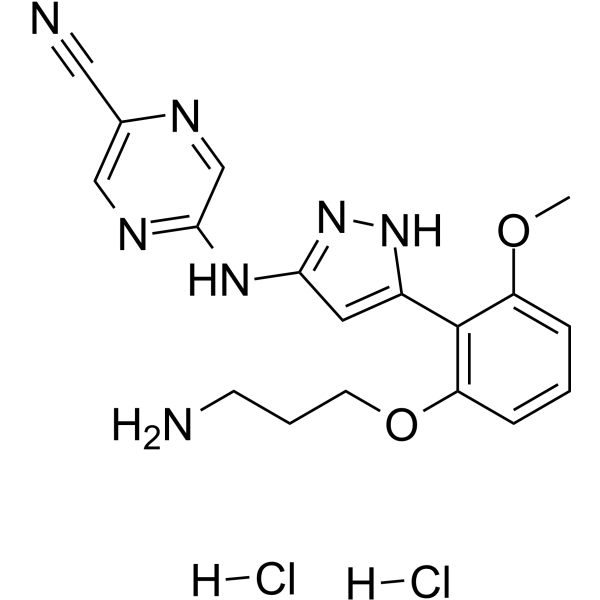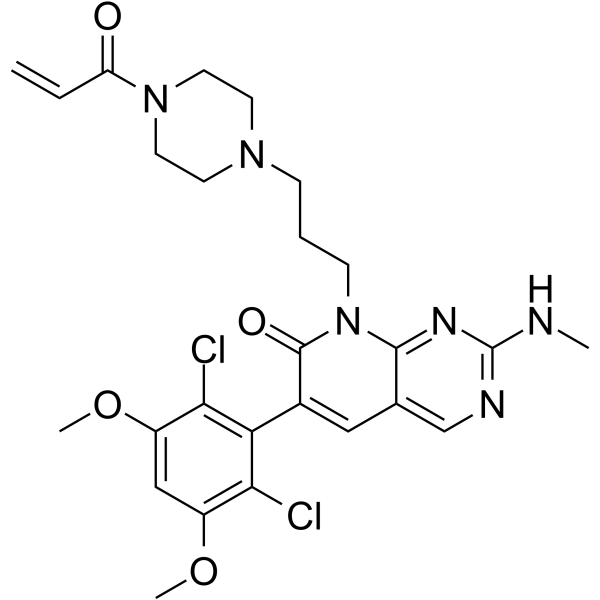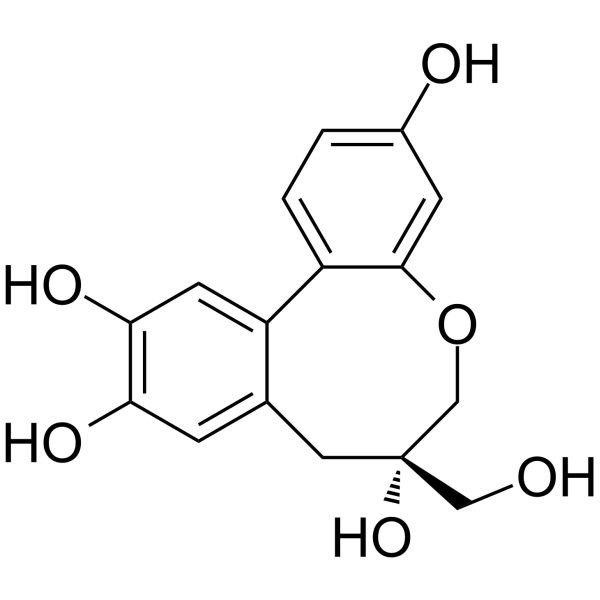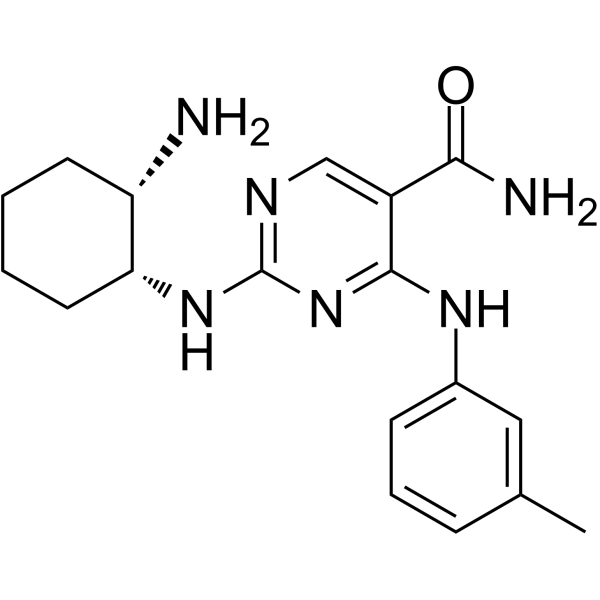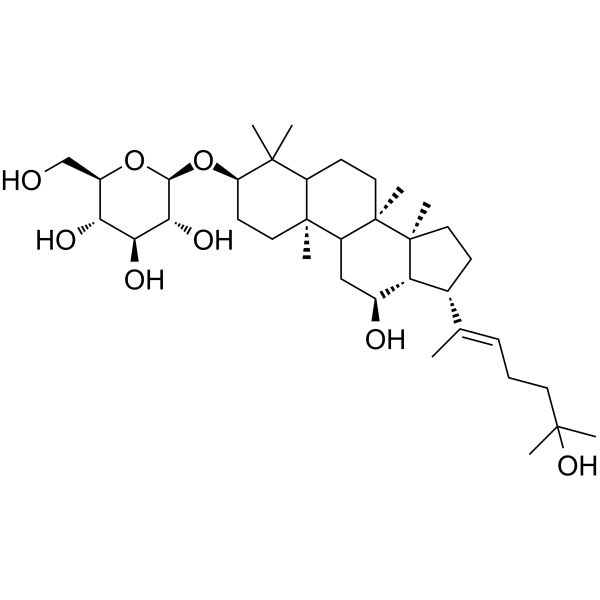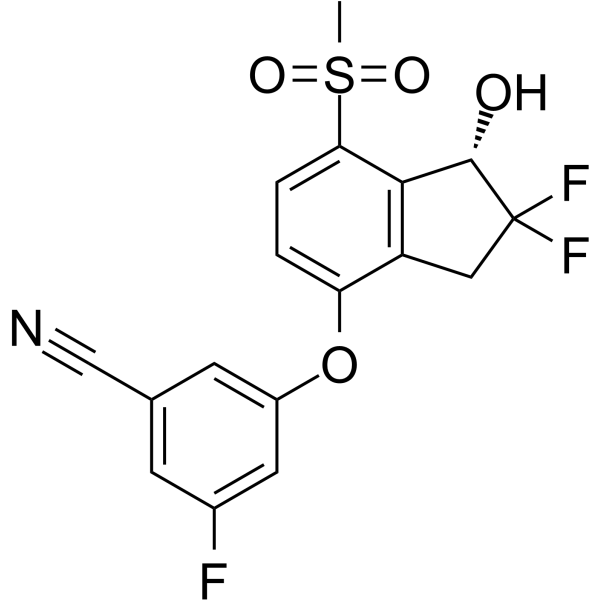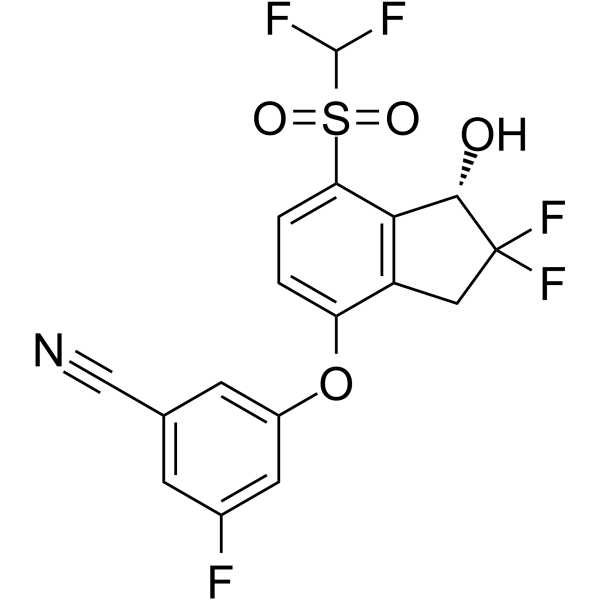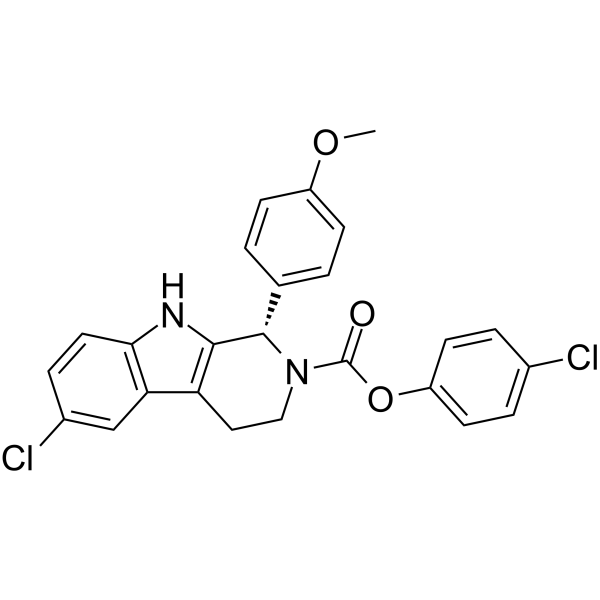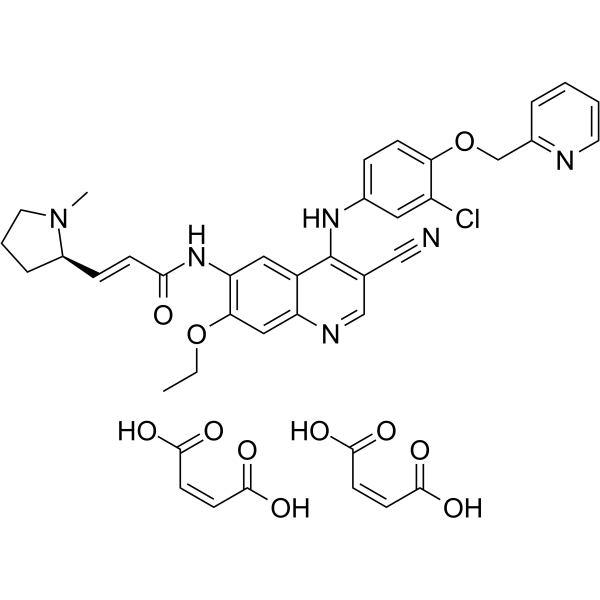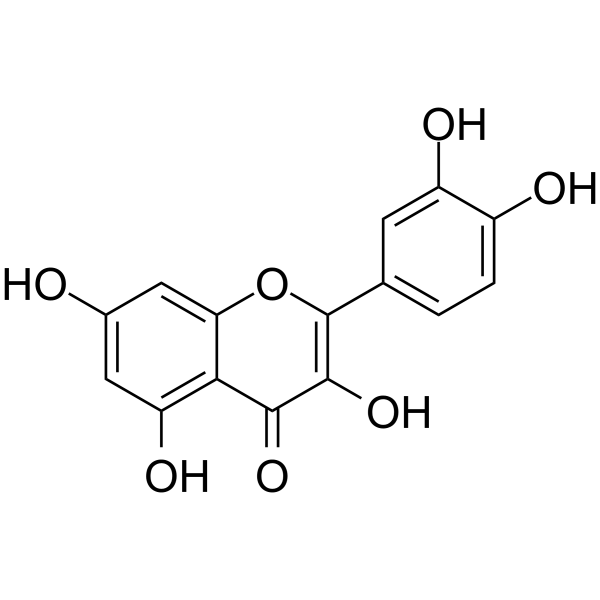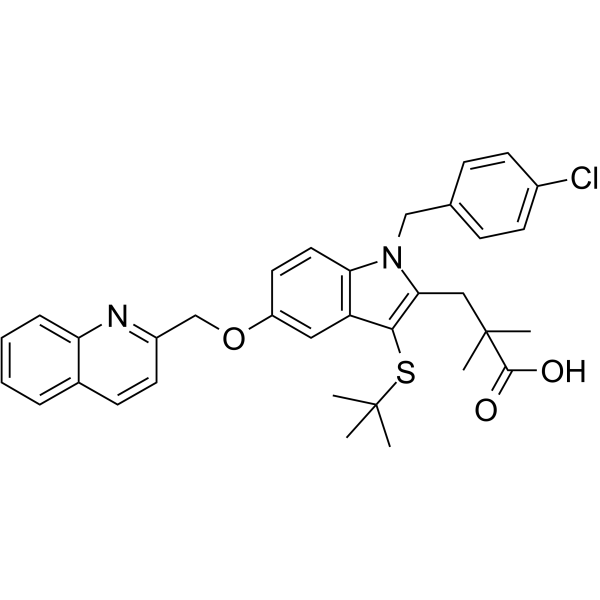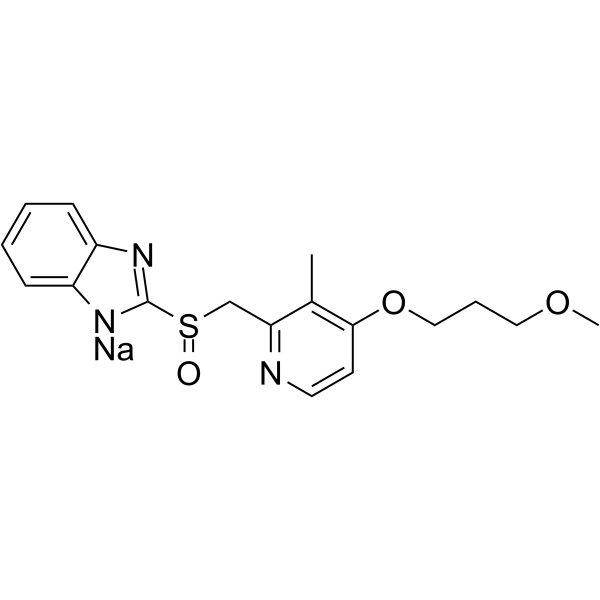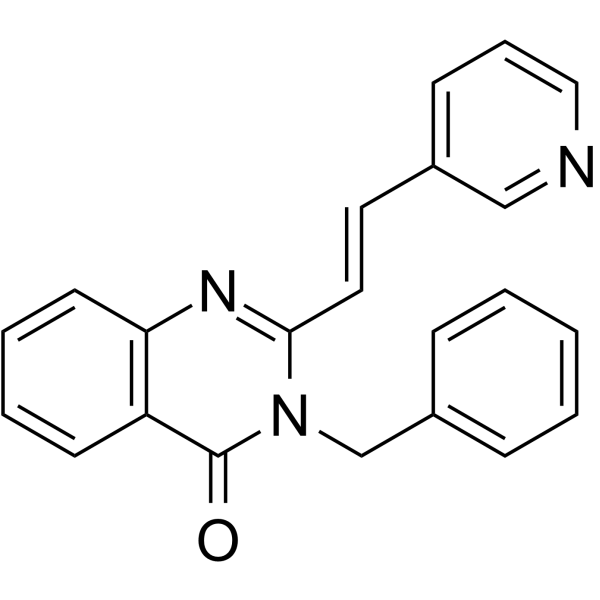|
BP10277
|
Prexasertib dihydrochloride
|
|
|
|
|
Prexasertib (LY2606368) is an ATP-competitive CHK1 inhibitor (Ki: 0.9 nmol/L). in the cell-free assay, its IC50 values are 8 nM and 9 nM for CHK2 and RSK, respectively.
|
|
BP10125
|
PRLX-93936 HCL
|
|
|
|
|
PRLX-93936 hcl is an analog of erastin and demonstrated synergistic effects against non-small cell lung cancer (NSCLC) cells with cisplatin.
|
|
BP10803
|
PRN1371
|
|
|
|
|
PRN1371 is a specific and potent FGFR1-4 and CSF1R inhibitor (IC50s: 0.6/1.3/4.1/19.3/8.1 nM for FGFR1/2/3/4 and CSF1R).
|
|
BP10031
|
Protosappanin B
|
|
|
|
|
1. Protosappanin B significantly increases cell viability, inhibits cell apoptosis and up-regulates the expression of growth-associated protein 43. 2. Protosappanin B induces the degradation of p53 protein, via activation of a MDM2-dependent ubiquitination process.
|
|
BP10220
|
PRT-060318
|
|
|
|
|
PRT-060318 (PRT318) is a novel selective inhibitor of the Syk tyrosine kinase, as an approach to HIT treatment.
|
|
BP10432
|
PRT062607 hydrochloride
|
|
|
|
|
PRT062607 (BIIB-057) is a selective inhibitor of Syk (IC50: 1 nM). It displays at least 80-fold selectivity for Syk over other kinases.
|
|
BP10433
|
Pseudoginsenoside Rh2
|
|
|
|
|
Pseudoginsenoside Rh2 has cytotoxicity, it induces mitochondrial apoptosis in A549 cells and is responsible for excessive activation of the Ras/Raf/ERK/p53 pathway. (20Z) -Pseudoginsenoside Rh2 and (20E)-Pseudoginsenoside Rh2 have antioxidative activity.
|
|
BP10726
|
PT-2385
|
|
|
|
|
PT-2385 is a selective HIF-2α inhibitor (Kd<50 nM).
|
|
BP10725
|
PT2399
|
|
|
|
|
PT2399 is a first-in-class, orally available, small molecule inhibitor of HIF-2 that selectively disrupts the heterodimerization of HIF-2α with HIF-1β. PT2399 displays potent antitumor activity in vivo
|
|
BP10775
|
PTC-028
|
|
|
|
|
PTC-028 selectively suppresses cancer cells whereas normal cells remain unaffected. PTC-028 is an orally bioavailable inhibitor of stem cell factor BMI-1 in ovarian cancer. The depletion of BMI-1 by PTC-028 causes caspase-mediated apoptosis.
|
|
BP10300
|
PTC299
|
|
|
|
|
PTC299 is an orally active inhibitor of VEGFA mRNA translation and selectively inhibits VEGF protein synthesis at the post-transcriptional level. PTC299 is also a potent inhibitor of dihydrolactate dehydrogenase (DHODH).
|
|
BP10170
|
Puerarin 6''-O-Xyloside
|
|
|
|
|
Puerarin 6''-O-xyloside possesses significant anti-osteoporotic activity on ovariectomy mice, it has significant antitumour activities, the mechanisms are related to increased levels of caspase-3, caspase-7, caspase-9 and Bax, and reduced levels Bcl-2.
|
|
BP10466
|
Pyrotinib dimaleate
|
|
|
|
|
Pyrotinib dimaleate is a potent and selective dual inhibitor of EGFR/HER2 with IC50s of 13 and 38 nM, respectively.
|
|
BP10795
|
Pz-1
|
|
|
|
|
Pz-1 is an inhibitor of VEGFR2 and RET (rearranged during transfection) tyrosine kinase that blocks the blood supply required for RET-stimulated growth.
|
|
BP10190
|
Quercetin
|
|
|
|
|
Quercetin, a natural flavonoid present in vegetables, fruit, and wine, is a stimulator of recombinant SIRT1 and also a PI3K inhibitor.
|
|
BP10424
|
Quiflapon
|
|
|
|
|
Quiflapon causes cell apoptosis. Quiflapon is a selective and specific 5-lipoxygenase-activating protein (FLAP) inhibitor (IC50: 1.6 nM in a FLAP binding assay) and is also an effective and orally active Leukotriene biosynthesis (LT) inhibitor (IC50: 3.1 and 6.1 nM in intact human and elicited rat PMNLs, respectively).
|
|
BP10165
|
Q-VD-OPH
|
|
|
|
|
Q-VD-OPha is a pan-caspase inhibitor with potent antiapoptotic properties.
|
|
BP10201
|
Rabeprazole sodium
|
|
|
|
|
Rabeprazole sodium is a 4-(3-methoxypropoxy)-3-methylpyridinyl derivative of timoprazole that is used in the therapy of stomach ulcers and Zollinger-Ellison syndrome. The drug inhibits H(+)-K(+)-exchanging ATPase which is found in gastric parietal cells.
|
|
BP10341
|
RAD51 Inhibitor B02
|
|
|
|
|
RAD51 Inhibitor B02 (B02) is an inhibitor of human RAD51 with an IC50 of 27.4 μM.
|
|
BP10419
|
ranaconitine
|
|
|
|
|
Ranaconitine is an important diterpenoid alkaloid from Aconitum sinomontanum Nakai,ranaconitine has cardiotoxicity.
|
